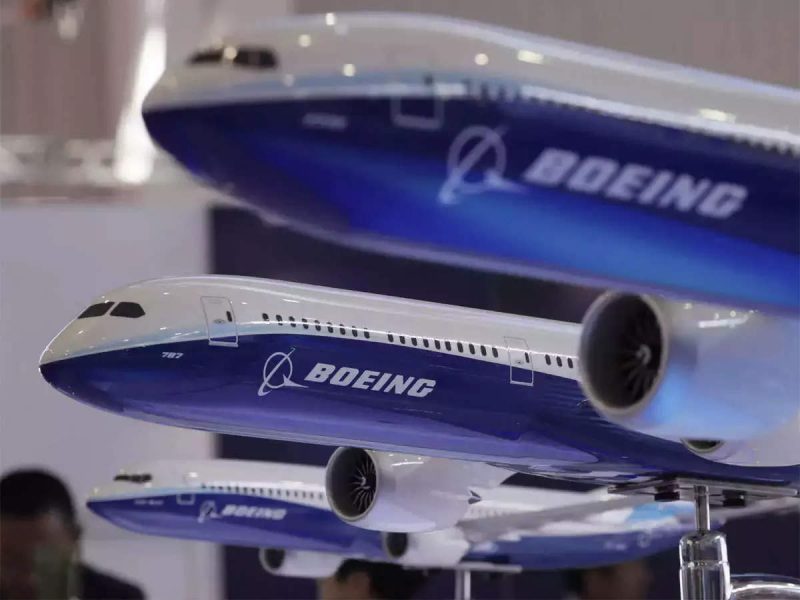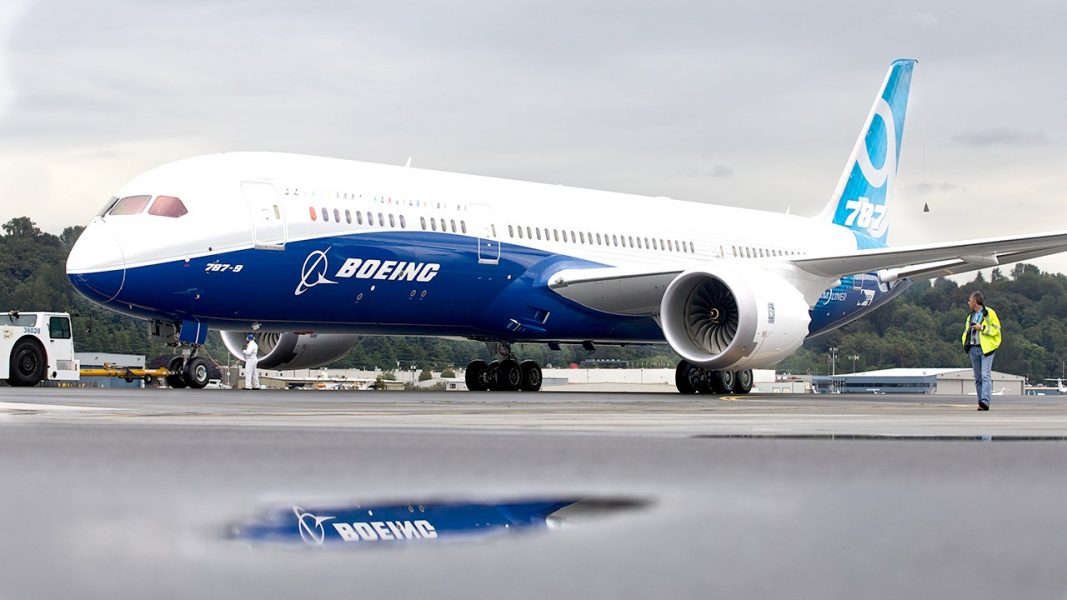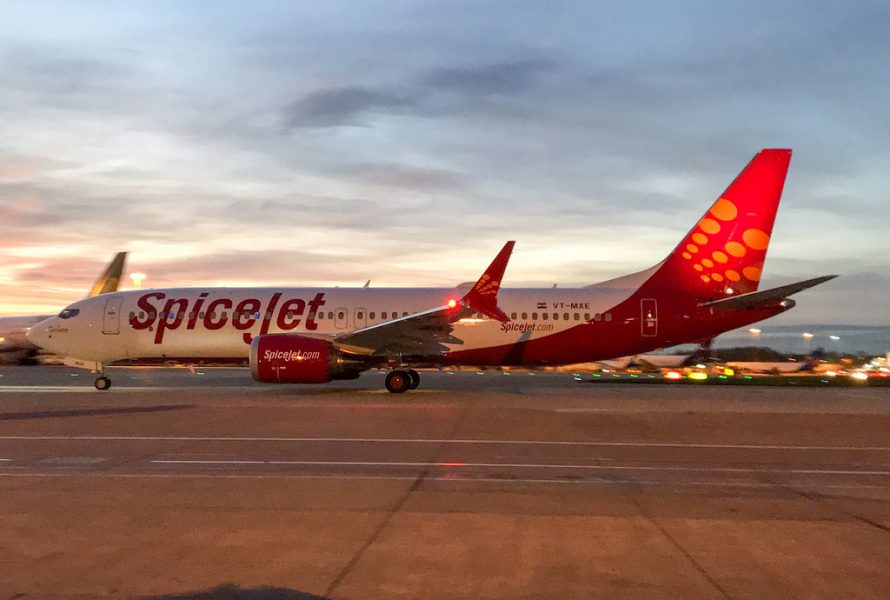Production issues don't seem to elude Boeing as the company seems to be confronting a new set of issues with its B787 Dreamliner now.
Although this wouldn't be the first time as the Dreamliner has been beset with issues ever since the fall of 2019. Back then, the company said that some of the plane's fuselage was not assembled together following precise standards.
According to a recent memo by the FAA, new issues with regards to contamination of the carbon fibre composite material during fabrication of the large structures that make up the 787’s wing, fuselage and empennage, have cropped up. And apparently, these weren't reported earlier.
Although considered not to pose an immediate threat to safety, these issues are prevalent in more than 1000 Dreamliners in service today.
We’re looking at the undelivered airplanes nose to tail, and we have found areas where the manufacturing does not conform to the engineering specifications. None of these issues is an immediate safety-of-flight issuea Boeing spokesperson said Friday
The FAA memo further details that Boeing doesn't have conclusive data on how many planes could have been possibly affected.
Contamination of carbon composites as stated by Boeing
The company had informed the FAA earlier this year regarding contamination of the composite material during fabrication that could potentially weaken the bonding when two composite parts are bonded together with adhesives. Apparently, this was detected by Mitsubishi Heavy Industries in Japan- a firm that builds carbon-composite wings for Boeing.
According to reports, the use of PTFE (polytetrafluoroethylene), left a residue after removal during the process, which failed to comply with Boeing's manufacturing standards.
Boeing further revealed that identical contamination has been detected in major other suppliers affecting not only the wing but also the fuselage and tail.
Additionally, further composite tests showed contamination in certain areas to be below the allowed design limits.
The FAA will investigatesays the memo
Boeing's communications team were quick to respond that it would be too early to comment on the issue as they didn't have enough data on the specifics.
We don’t comment on ongoing discussions with manufacturersan FAA spokesperson
The memo further mentions the use of an incorrect alloy of titanium in certain fittings installed in fuselage sections made by Leonardo in Italy.
Airline Ratings
These could lead to a further potential delay in deliveries of the 787 which could cost dearly to the company, considering Boeing had already registered nearly $20 billion in core operating losses over the last eight quarters.
COVER: Fox Business
Read next
Tamil Nadu based firm to manufacture and supply over 600 critical components for Boeing
Prashant-prabhakar
21 Nov 2021

To give a brief introduction, Aerospace Engineers Pvt Ltd (AEPL), is a Salem based firm, founded by Sundaram Ramaswamy Naidu- a polymer technologist from the Madras Institute of Technology.
The Federal
Up until now, the firm had been a Tier 2 supplier for Boeing. Reportedly, the company has now bagged a long-term contract with US-based aerospace giant Boeing to manufacture and supply 683 critical components, from the first quarter of 2022.
Apparently, the company also ships components for Airbus and Roll Royce as well.
Clamps and fittings for the aircraft engines will be our first deliverySundaram
The company plans of fusing 150 crores into supporting its expansion strategy which would additionally employ around 1000 people.
Sundaram's expansion plans also happen to be run by the state government's "Make in Tamil Nadu’ initiative. Furthermore, this comes at a time when the Union Government plans of establishing a defence corridor in the state.
Boeing-AEPL deal finalization | The Salem Aeropark
In addition to the facility at Salem, AEPL is setting up another 1,25,000sqft manufacturing facility, dedicated to civil aerospace production in Hosur.
A brief history about the man himself
A chance meeting with the late president APJ Abdul Kalam is what pushed Sundaram to bury his inhibitions and chase his goals.
In 1994, when a UK based firm that supplied cockpit rubber seals shut down, Kalam expressed the thought of manufacturing them indigenously in India.
Eventually Sundaram, in collaboration with DRDO and HAL, would go on to manufacture the cockpit rubber seals, to be later tested by Rakesh Sharma-India's first astronaut and commander at HAL at the time.
We discovered that our seal could survive cabin pressure for 65 seconds, but imported cockpit seals could only withstand it for 14 seconds. After successful testing, Sharma stated that our device is superior to the stimulatorSundaram
In addition to making components for ISRO and DRDO, the company manufacturers cockpit seals present in most of the birds flying in Indian airspace today.
The Salem Aeropark
Many of our components are used in aircraft such as MIG-21, 27 and 29, Hawk Aircraft, Sukhoi SU 30, missiles such as Tejas, Brahmos and Akash, helicopters such as Dhruv, and rockets such as GSLV and PSLVSundaram
With the acquisition of the recent order, the company has turned Tier 1 and would now be shipping components to Boeing directly.
COVER: The Economic Times
Read next
IndiGo is APAC's largest airline by capacity and the world's tenth-largest airline - OAG
Radhika Bansal
20 Nov 2021
IndiGo has emerged as the tenth-largest airline globally and the largest in the Asia Pacific by seat volume, according to UK-based air consultancy firm OAG.
The low-cost carrier has 280 aircraft currently in its fleet that operate over 1,400 daily flights.
In pre-pandemic times, the airline had about 1,600 daily flights of which 400 to 450 were international.
At the moment it has about 1,400 daily flights of which nearly 80 are international, airline CEO Ronojoy Dutta had recently told TOI.
OAG on Friday, November 19 released a report on “essential metrics on the world’s major airlines” comparing the capacity of airlines in the summer of 2019 (March 31, 2019, to October 26, 2019) and with this summer.
IndiGo “is operating at almost three-quarters of summer 2019 levels in capacity terms and is currently the tenth largest airline globally. Although predominantly a domestic airline, 9% of IndiGo’s summer ’19 capacity operated internationally.
Currently, international airline capacity is only operating at 37% of summer 2019 levels,” the report says.
IndiGo this summer, says OAG data, had 3.7 crores deployed seat capacity.
Southwest and Delta Airlines stand at first and third positions respectively. (Image Courtesy - Dallas Morning News)
The other big airlines globally ahead of IndiGo in terms of seat capacity deployed include - Southwest Airlines (10.8 crores), American Airlines (9.6 crores), Delta Airlines (8.8 crores), China Southern Airlines (7.9 crores), China Eastern Airlines (7.2 crores), United Airlines (6 crores) and Air China (4.9 crores).
In terms of deployed seat capacity, OAG data shows IndiGo operated 73% of overall seat capacity this summer over the same period two years ago, or 2019 — the last pre-pandemic year.
The recovery rate of other big Asian Pacific — Lion Air (second rank capacity wise, 60%); All Nippon (rank 3, 43%); Japan Airlines(rank 4, 50%) and Qantas (rank 5, 43%) is much lower.
(Image Courtesy - Business Wire)
OAG is an Air Travel Intelligence company that specialises in the delivery of digital information and travel planning solutions to clients such as airlines, airports, government agencies and travel-related service companies.
The company offers flight status and scheduling data, as well as analysis tools to facilitate commercial planning and business decisions. With its headquarters in Luton, OAG has international offices in the United States, China, Japan and Singapore.
IndiGo is a low-cost carrier based in Gurgaon, India that commenced operations in August 2006. The carrier, which is owned by Rahul Bhatia’s InterGlobe Enterprises, operates an extensive domestic network and international services to South Asia, Southeast Asia, Europe and the Gulf.
Read next
For the first time since the Boeing 737 Max's global grounding in March 2019, Indian airlines, both existing and new, are preparing to fly passenger flights on the plane.
SpiceJet currently has 13 leased Max in India, and one of them is scheduled to fly its "operational readiness" flight (without passengers) on Friday, November 19 after undergoing the necessary hardware and software modifications.
More SpiceJet Max aircraft will undergo readiness flights in the coming days before returning to service for commercial flights, which is expected to happen very soon.
Billionaire investor Rakesh Jhunjhunwala’s Akasa has ordered 72 B737 Max which it will start getting in time for the planned launch in the summer of 2022.
B737 Max’s return of service — and more importantly winning people’s confidence back — of the Max is crucial for Boeing, SpiceJet and Akasa in India.
Boeing desperately needs the Max to succeed to take on arch-rival Airbus whose A320neo has been a runaway commercial success.
Cash-strapped SpiceJet needs fuel-efficient planes to survive in a cost-hostile environment when crude prices are spiralling and its competitors in India are doing so.
In fact, IndiGo will by the end of 2022 replace all its older A320 ceos with the neos.
SpiceJet has cut flights this winter and is now number four in terms of domestic market share with GoAir overtaking it last month, as per DGCA data.
IndiGo — the world’s biggest customer of Boeing arch-rival Airbus A320 neo — remains the market leader by a huge margin, followed by Air India and GoAir. It needs deliveries of Max to resume for phasing out older fuel-inefficient planes and then grow its fleet once the replacement is completed.
For Akaksa it is crucial Indian flyers have accepted the Max by the time it launches next summer.
The Directorate General of Civil Aviation (DGCA) had this August allowed the Max to fly again “upon satisfaction of applicable requirements for service return” — meaning carrying out required changes to ensure safety.
The MAX aircraft were globally grounded in March 2019 following two crashes — one of Indonesian Lion Air and another of Ethiopian Airlines — in quick succession.
The two crashes had claimed the lives of 346 people on board these planes.
Last year, Boeing finalised software and hardware modifications to ensure safety on the Max. These changes were vetted and approved by foreign aviation regulators, including those of the country of manufacture USA, EU, UAE, Singapore and UAE.
India was among the last to approve the changes and allow modified Max to fly again, with China the only major country yet to clear it.
“Worldwide 17 regulators have permitted operation of Boeing 737 Max airplane. A sizeable number of airlines (34) with B737 Max airplane (345) are operating currently… since the un-grounding from December 9, 2020, with no untoward reporting,” the Indian DGCA order of August 26, 2021, permitting the Max to fly again in the country says.
Read next
An Air India flight winging its way from London to Hyderabad flight last Thursday, November 11 was diverted to Ankara due to a fuel leak.
The Dreamliner (VT-ANB) operating as AI 148 landed safely in the Turkish capital.
AI made alternate arrangements for flying passengers of AI 148 from Turkey to India.
The Directorate General of Civil Aviation (DGCA) is probing this snag.
“AI sent a maintenance team to Ankara for inspecting and carrying out repairs on the Dreamliner. The diversion was due to fuel leak,” said a DGCA official. This aircraft flew to Delhi last Saturday (November 13).
Comments have been sought from AI and are awaited.
A fuel leak from an engine can often be resolved by shutting down the affected engine. A tank leak due to a rupture in the tank will result in the loss of some or all of the fuel in that tank. If a fuel line is ruptured, it could result in some fuel being unusable.
Air India is the state-owned national carrier of India with its main hubs at Delhi and Mumbai airports. Indian Airlines merged with the carrier in August 2007.
(Image Courtesy - Ganesh Panner)
Air India's network covers domestic and regional destinations, as well as international services to Asia, the Middle East, Europe, and North America. The carrier also operates an international LCC subsidiary, Air India Express.
Air India became a member of the Star Alliance in July 2014.
India's Ministry of Civil Aviation announced India's Government signed a share purchase agreement with TATA Group on Oct 2021 to acquire a 100% stake in Air India, Air India Express and Air India SATS Airport Services PVT Limited.
(With Inputs from The Times of India)
Read next
Go First's IPO will take place on December 8, with proceeds going towards debt reduction
Radhika Bansal
20 Nov 2021
GoAir, rebranded as Go First, is planning to raise INR 3,600 crore from its initial public offer (IPO) and launch its share by December 8.
The company will use the proceeds to reduce its debt exposure, pay oil companies and lessors, Business Standard reported on November 19, citing a company source.
The company's IPO anchor issue is scheduled to launch on December 7. GoAir had filed an addendum to the draft red herring prospectus earlier this month intending to make part payment of outstanding lease rental, maintenance, repair and overhaul of aircraft.
(Image Courtesy - Curly Tales)
The company is looking to pay INR 443.97 crore on the outstanding payment to the aircraft lessors CDB Aviation Lease Finance DAC, Jackson Square Aviation Ireland Limited and ACG Acquisition Ireland III Ltd, according to Moneycontrol.
Meanwhile, the company also looks to pay INR 96.3 crore out of the outstanding maintenance amount from the proceeds to MTU Maintenance Zhuhai Co Ltd.
The company had posted a net loss of INR 923 crore in April-September of the current financial year.
The Wadia group-controlled airline is working on cost-saving measures and evaluating the higher-capacity Airbus A321neo aircraft to deal with losses due to amortisation of aircraft leases and higher fuel costs.
(Image Courtesy - Curly Tales)
However, with the easing of lockdown restrictions, massive reduction in fresh COVID-19 cases and growing vaccination coverage, the airline saw its revenue in the first half double to INR 1,202 crore on a year-on-year basis due to increased capacity.
Go First achieved an EBITDAR (earnings before interest, depreciation, tax, amortisation, and rentals) margin of 13.9% in the July-September, aided by 53% revenue growth in the period, a source said.
The domestic aviation industry is expected to post a 45-50% growth in FY22 in domestic air passenger traffic, and the international air passenger traffic is expected to grow at 80-85% during the same period, according to ICRA.




Comment